Late-War Conversations: Views on a Local FOW Meta

By Richard Steer
The Late-War period of Flames of War was completed last year with the release of the Berlin books. With no new releases over the last 12 months, the meta of the competitive scene is probably the most stable it has ever been.
A meta can be defined as “the game around the game”. In Flames of War this includes all of the things that go on up until you start deployment, such as the options that go into list building and your choice of Battle Plan. There’s always been a meta: those lists that appear, dominate the competitive scene for a while, become super popular, and then fade as players work out how to counter them and new books create new competitive opportunities.
Local metas are often created by the way that the most successful players in a particular region or gaming group approach the game. To find out more about the Late-War meta in our local region of Wellington, New Zealand, I recently spoke with four players who have for many years been among the top FOW players in New Zealand: Bede, Chris, and Simon from Wellington, and Sofia from Auckland, to hear their views of the state of the Late-War game in our corner of the world.
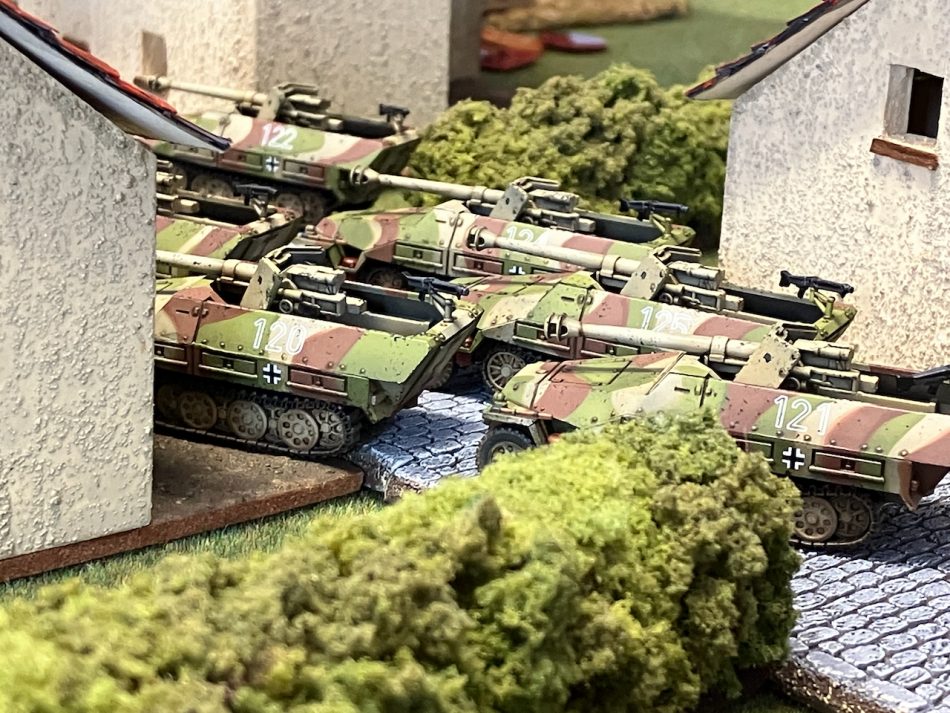
What are the characteristics of our Late-War tournaments in Wellington?
Chris: Our local meta has tended to be single-formation lists, tending to be more “all-rounder” lists with a bit of everything in them. I don’t think the meta here changes rapidly, as most local players tend to choose a faction and then iterate on those lists to improve them. Two years ago I would say we were prioritizing Careful ratings, but with the options coming out of the more recent books, I’d say we are moving away from that. As a local community, we do tend to have a real willingness to try oddball lists and units.
Simon: I think we have shifted to a majority of players using armored armies. This may be a reflection of the V4 rules favoring attack over defense. Classically I’ve primarily run infantry companies, but even I’ve started playing more armoured companies.
Bede: After the arrival of V4 there was a real drop-off in tournament size and frequency. The wide range of lists disappeared, along with many regular players. It is only with the release of Berlin that we have the option to build from something approaching the depth of lists we had at the end of V3. I’ve seen competitive meta as largely being defined by what matched up well to the two early ‘power’ lists: British Infantry with Crocodiles and eight Achilles, or variations of the German 116th Panzer Division ‘Greyhound’ list.
Sofia: I think Wellington players probably play a bit more than we do in Auckland. They tend to be sharper on the rules, and they play each other often enough that the rules read is more consistent. It is the club games and 1-day events in Wellington that have helped lift FOW a bit there. I think in New Zealand in general, and also in Australia, we are turning lists over less frequently than in the Euro-meta. I will say though that there’s a rapidly growing new group of players here in Auckland who are bringing about a renaissance of FOW and Team Yankee. Some great new players with new ideas are changing the face of the Auckland meta.
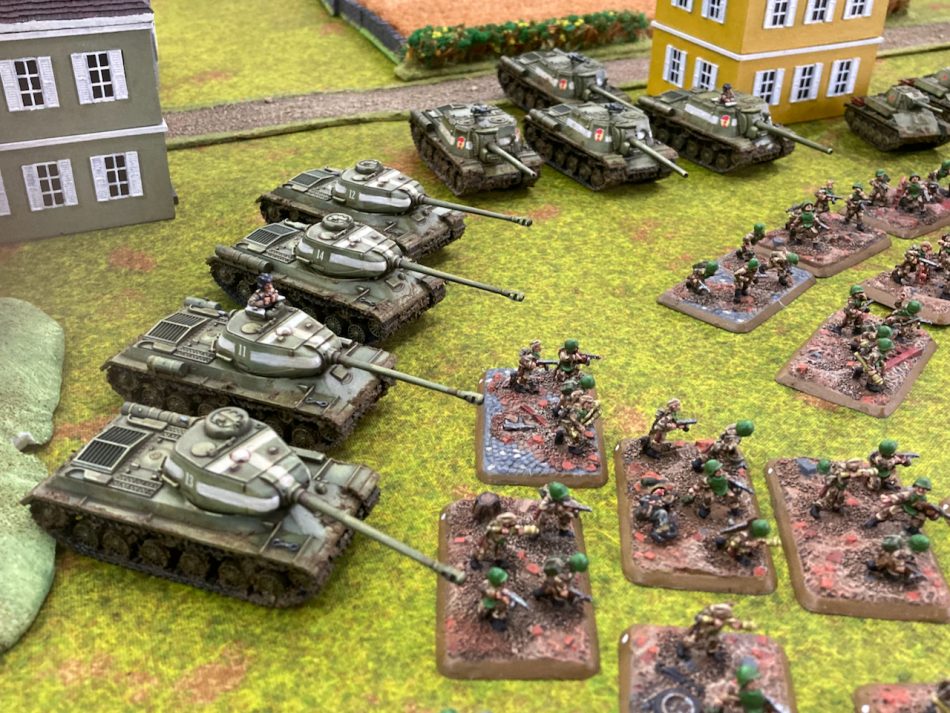
What process do you go through when you start building a list for a Late-War event?
Chris: It is an exercise in pulling together my thoughts on what would be interesting to play. Sometimes that’s defined by a unit I want to include, perhaps because I think it’s cool, or because I’ve had it sitting there and I need to motivate myself to paint it, or perhaps because I was badly let down in a game where I didn’t have it. Most likely, I will start with some sort of tank list, as I know that I am a better tank player. That sets me up with a small number of mobile units, which puts me in the best position to win games within the time available in a competition.
From there, I want multiple units with Anti-tank 13+, and artillery because of panzerfaust infantry and anti-tank guns. I have come to terms with the inclusion of an infantry platoon being essential, especially for dealing with buildings. As a tank player, having parts of the table that I can’t interact with means having to rely on guns to remove infantry from buildings to win the game, which, while possible, takes time – something you start running out of in tournaments! Spearhead is nice, but I find the missions I tend to play don’t usually allow for it, so that would be lower down on the list of nice to have.
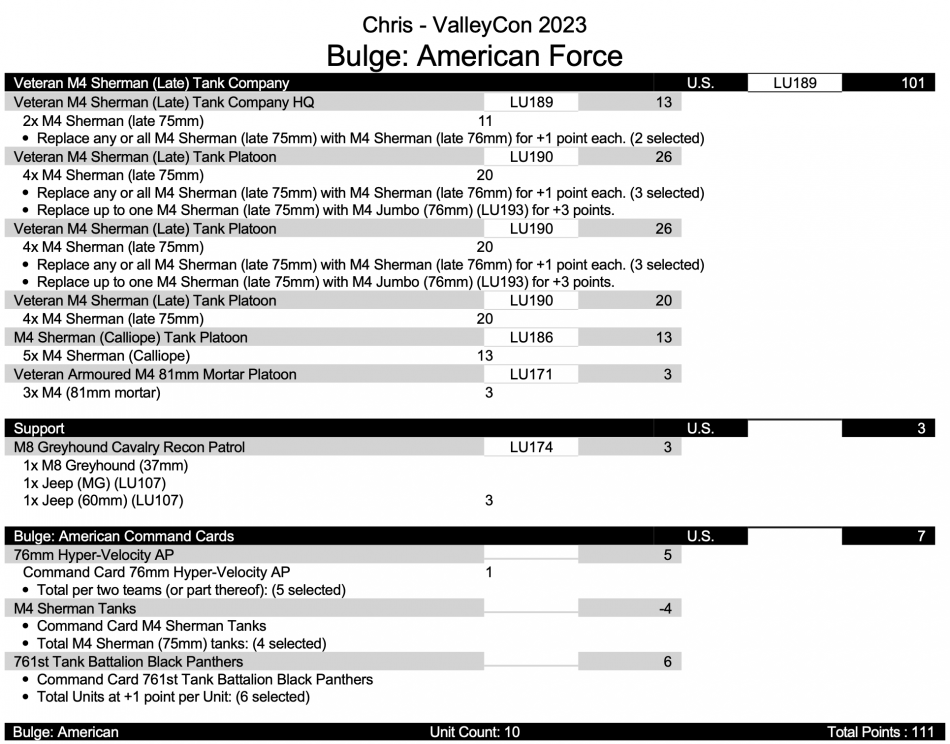
Bede: My uber-competitive days are behind me, so my approach has largely been guided by building from what models I had painted at the start of V4, and what I can get excited about painting before an event. Modeling has taken precedence so whatever I want to get painted will take priority, followed by taking a look at how I can eke out some wins. Sometimes the painting desires and a competitive list come together nicely and I end up with something dastardly.
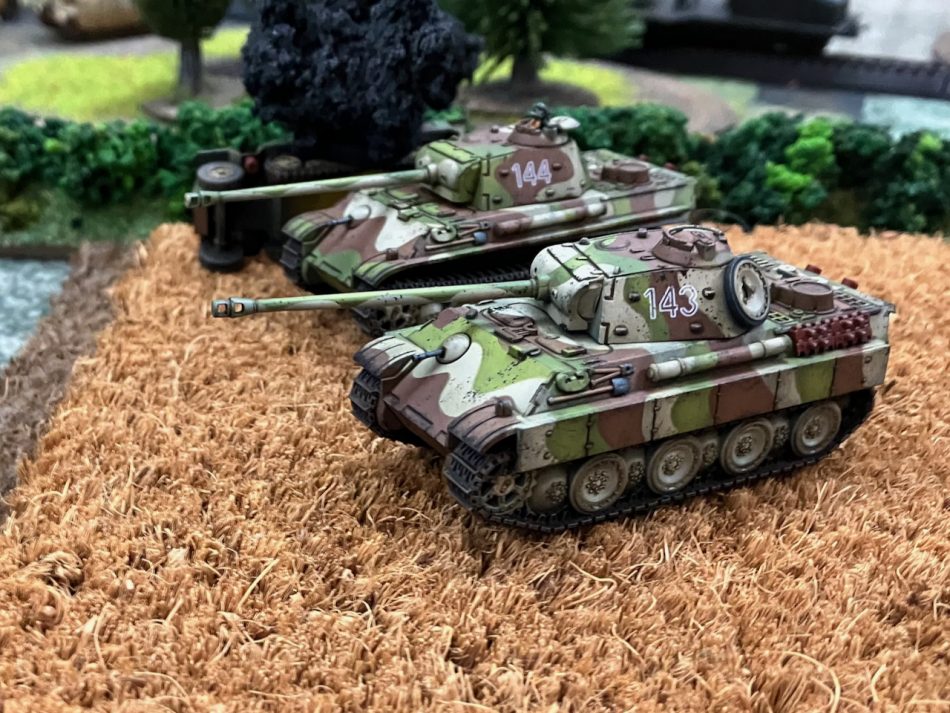
Simon: Firstly, what is going to be fun to run for five games in a row? Secondly, what do I already have on the shelves – do I have to buy and paint anything new? Being a history student and very interested in WW2, I have favorite historical units that I like to run. I try to be as faithful to the TO&E of the unit in a particular time period and that quite often leads to not running the ‘best’ equipment.
I have also tried to buck the overseas trends, trying to prove those thought processes wrong, or at least trying to point out that a “meta” is only an agreed-upon thought process. If everyone subscribes to that thought, then of course it’ll come true. Having players play in different styles, and with different lists, makes the scene more exciting.
The key elements of my lists are:
- Having a small number of mobile reserve platoons, often with a Lucky card for rerolling the first Reserves die.
- At least one unit of mobile anti-tank. If it isn’t AT14+ then I’d look for multiple units with high mobility and AT12+.
- At least one unit of artillery, preferably with smoke and an observer.
- A unit of good assault infantry (to get into buildings).
- THE UNIT: the one thing that I need to deliver onto an objective to win the game.
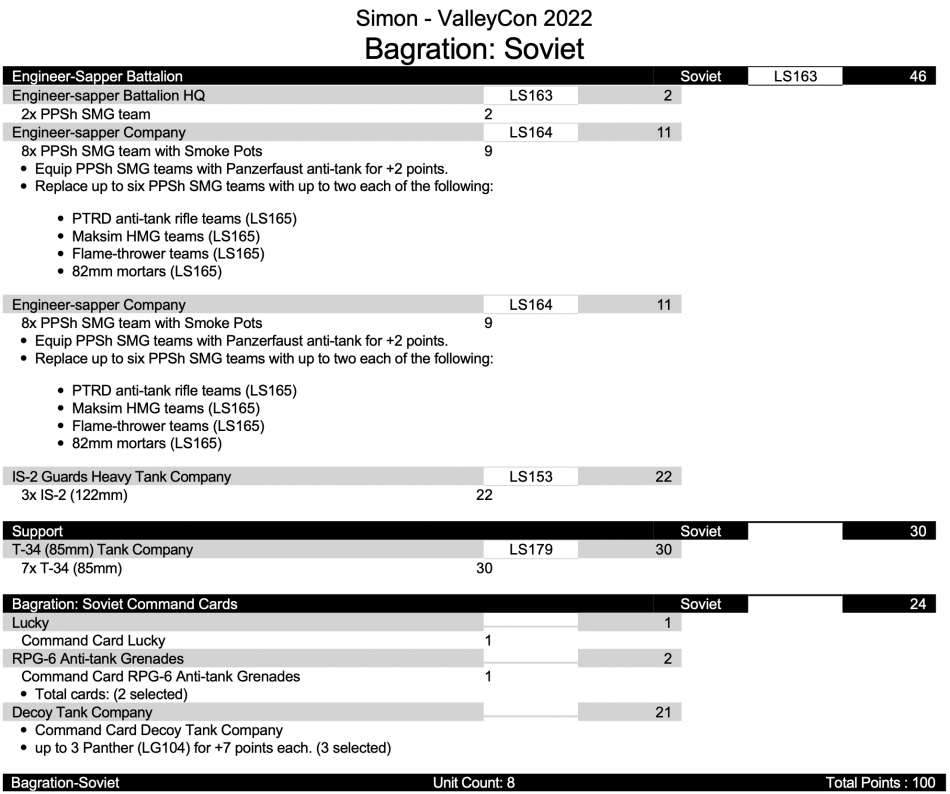
Sofia: I tend to run in seasons with my lists. Early on I ran T-34s, then got into a German season of sorts after the D-Day releases, but I have been into Hero Motor Rifles since Bagration. Through my Hero Motor Rifle days I became very familiar with aggressive assault infantry, which led inevitably to US Rangers. With the right support, something like Rangers can win any mission. After that, I build around the core by adding templates, sufficient ranged AT, and scouts. Always take a Spearhead unit, always, no matter what. It is also critical to design reserves into the list.
Richard: When I first saw your Stuart/Hellcat/Ranger list for ValleyCon 2023, it didn’t strike me as being particularly scary, yet you went on to win all of your games. What were you looking for that led you to land on it?
Sofia: My ValleyCon list was a funny one. To look at, it didn’t seem especially “meta”, but it leveraged the ETC 2022 meta very heavily. Stuarts are very good versus halftrack spam, but I was surprised to see so few light spams at ValleyCon. But the most significant thing that the Stuarts bring is cheap templates in the formation, otherwise they tend to just run interference. The Rangers were a given because I am very used to Hero Motor Rifles, who run in much the same style. The pair of Hellcat platoons is the same concept that Bede has run for years with M10s, and click really well with the Stuarts. The reserves are stupidly bad, but the Rangers often do the job before the reserves arrive, so I managed to get quick results. I think there is a lot more mileage in my US season yet to be realized…
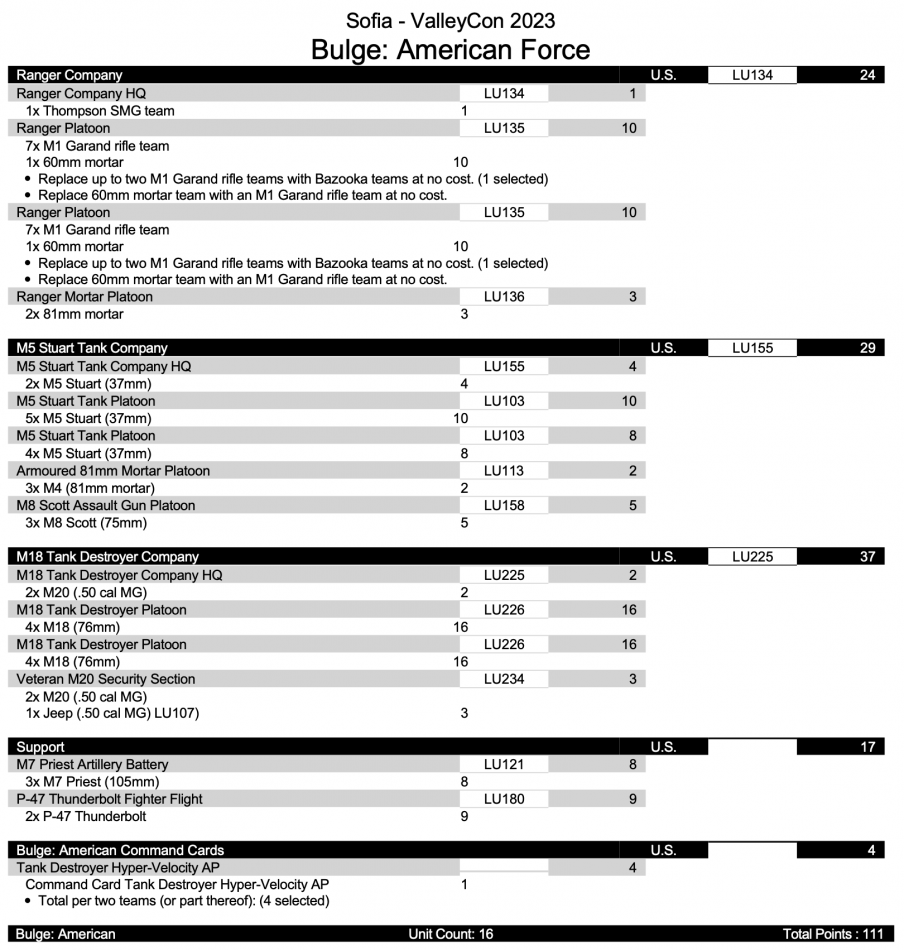
The Battle Plans matrix has added an extra dimension to the meta. How does it affect the way you build your lists?
Simon: I really like the matrix. I was never any good at pre-planning an army that would perform in five pre-set missions. Battle Plans makes it much easier to prepare my force. I normally look to be aggressive and choose the Attack stance. This means that if my opponent doesn’t also Attack, I will be in the driving seat.
Sofia: Battle Plans was the most significant change with V4, and without it I suspect the edition might have been far less successful. The Battle Plans matrix gets you the missions you want more often if your list is well-designed. A list build for Battle Plans requires being good with reserves management as if that fails, you will lose. In my experience, Attack is the best plan but a Manoeuvre call is well-suited against Defend. One thing I have noted about the Wellington meta, which is similar to Cancon in Australia, is the tendency for more people to call Manoeuvre or Defend. This is not the same as the Euro-meta, and also less common in Auckland.
Chris: I like to be a “go forward” player so tend to live in the Attack part of the matrix, sometimes using Manoeuvre when I go up against a player that I want to enforce a different mission on, be they a hard defensive list, or another attacking list that I don’t want to have to attack frontally.
Bede: Deciding on stances is certainly part of my list building process. If I’m planning to Attack, do I have enough artillery and smoke to get me where I need to go? If I’m going to be flexible about my stance, do I have the tools to do everything well?
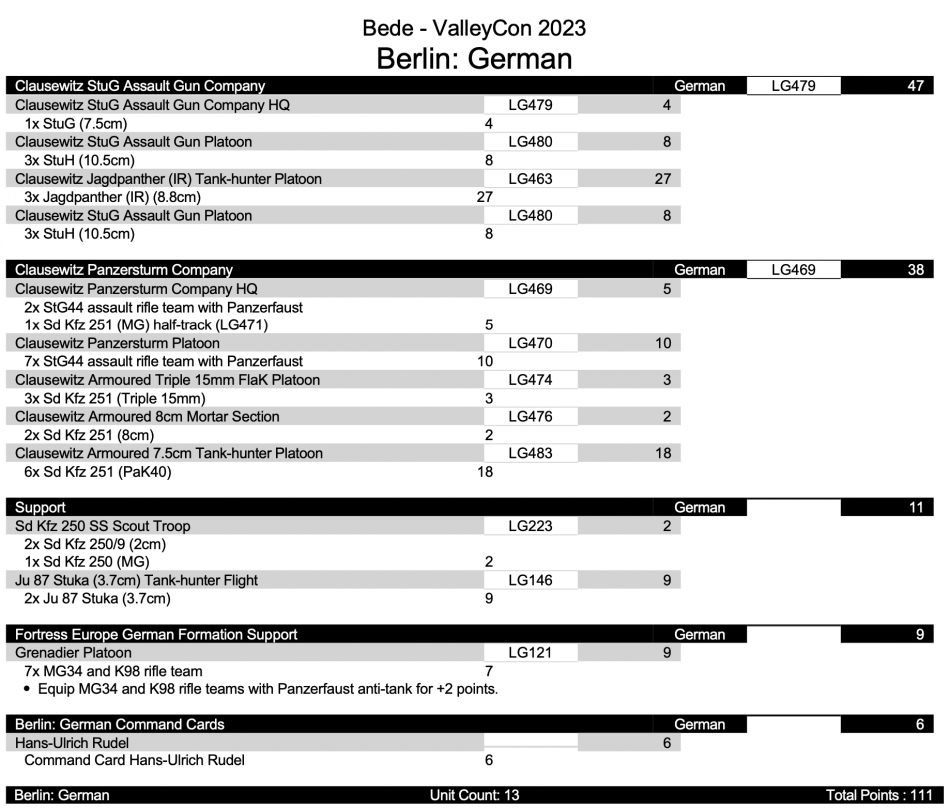
Do you have any words of wisdom for players who are looking to improve their performance at tournaments?
Bede: Practice! By far the biggest determinant to success is player skill, and knowing your list inside out is a big part of building that skill. How does it function against likely opponents? Can it capture an objective held by a Careful double panzerfaust platoon with supporting anti-tank? Can you lift a minefield in good time? Can you defend successfully for three or four turns while waiting for your reserves to arrive? The only way to discover this in advance of a tournament is to practice, both with games versus human opponents, running a few specific in-game scenarios solo, and running situations through in your head.
Chris: Whatever list you choose, remember that you will be playing it multiple times in a weekend. The least enjoyable tournaments I have played have been where I have picked a list for a gimmick which, while fun for one game, was an absolute grind for the remaining games. So choose a list that you enjoy playing, and test it before the tournament to see if it’s a list you are going to enjoy playing multiple times.
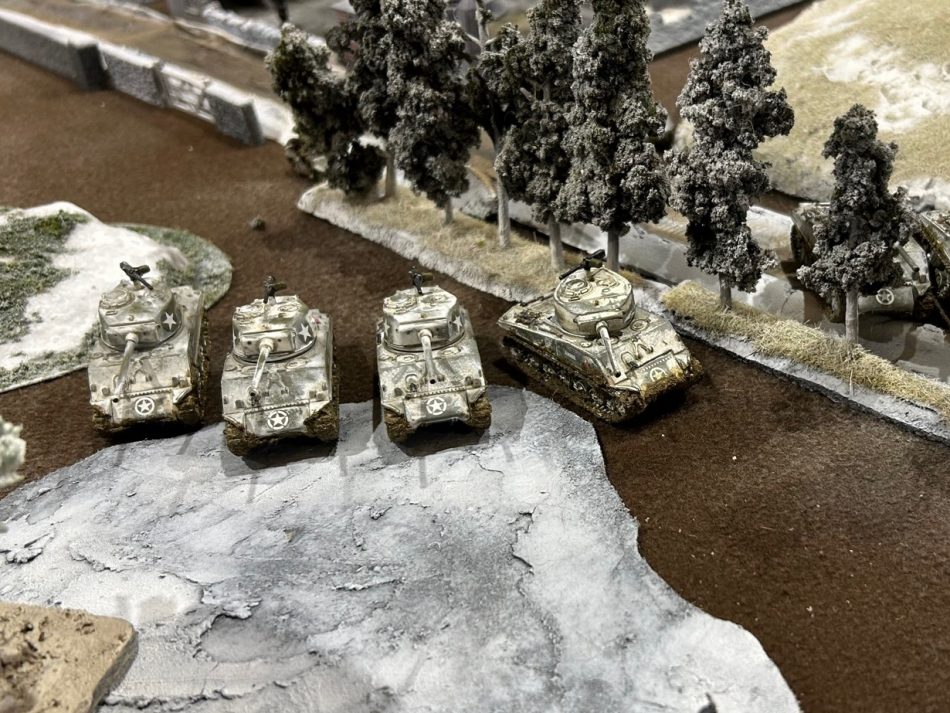
Sofia: Play as many opponents as you can, and if you can play more and better opponents you will see how good players run their army. Do watch the YouTubers, Facebook, and blogs, but remember that there is no qualification to post on YouTube or a blog, and some of the stuff out there is not so helpful. You will learn more from discussing units and synergies with experienced players at events and your local club. I have learned more by playing at events than anywhere else, but also a good core of local players to practice against is so helpful.
When you finish an event, be objective about your performance. Did you win or lose because of your list? Was it things you did or didn’t do? Was it things that your opponents did that you had no counters for? I don’t think anyone loses consistently because of dice. You need to learn how to build in redundancy with your actions, have more dice than you expect to be necessary for a given result. Improving is difficult if you struggle with objectivity.
Simon: Find a nation that you enjoy and play it. Use proxies and play against your mates to find what works. Attend events and see how others play. Ask questions of the ‘better’ players on what they do, but you aren’t under any pressure to listen! Have a plan and stick to it. During the game think about what your opponent can do, but in reverse stack your turn so that if there is something important you need to have succeed, the dice don’t ruin it for you.

Super. Merci